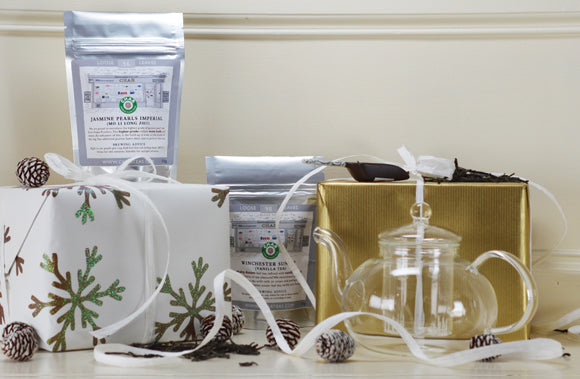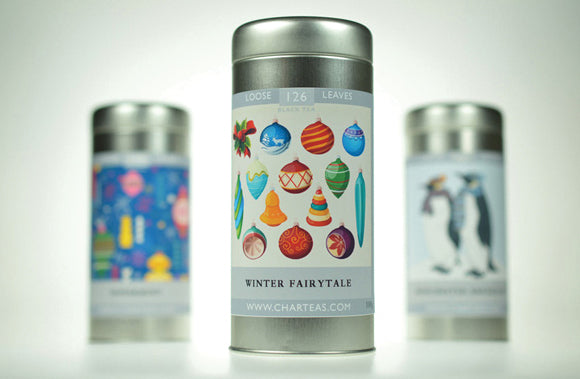
Tea Regions of India
Assam
Assam is a province in north-eastern India which has a tropical climate. Surrounded by Bangladesh, Burma, Bhutan, Tibet, and China, the only connection to the mother country India is a strip of land in the northwest of its province. Roughly half the tea produced in India is grown here: the largest tea-growing region in the world.
These strong and spicy teas perform well with hard water and have become the basis of several classical tea blends.
What is First Flush Assam?
Contrary to Darjeeling, the first flush Assam tea is considered to be the least characteristic, being seen as quite tart in character.
What is Second Flush Assam?
With the aid of a very generous sun, second flush Assam tea is bursting with flavour. High quality second flush Assam teas have a dark infusion with flavour profiles including strong, full, spicy, and malty characteristics.
Second flush Assam teas available at Char include:
The best Assam tea that Char’s professional tea taster had ever tried. This surprisingly delicate tea does not necessarily require milk or sugar to stave off astringency, as its dark amber cup delights with malty and richly spicy notes that linger in a tea-lover’s heart long beyond their cup is empty.
Uncharacteristically for an Assam tea, Panitola has a strikingly even, medium-sized, pine needle-shaped leaf with lots of tips. It is a gentle yet spicy Assam tea which can be medium to strong, and leaves a slightly malty aftertaste.
This spicy and malty Assam tea is great for anyone wanting something a little bit floral but with the Assam tea kick.
Darjeeling
Darjeeling is without doubt one of the most renowned tea growing regions. On the southern slopes of the Himalaya Mountains at altitudes of up to 2,500m, more than 80 plantations produce the most exquisite varieties of the world.
Darjeeling tea is traditionally produced with the Chinese cultivar of the tea plant, but most teas from this region are processed as black teas resulting in a light, non-astringent black tea which tastes beautiful without milk or sugar.
What is First Flush Darjeeling Tea?
The tea plant has 3-4 growth periods in a given year, and for Darjeeling tea, the first flush in March – May is considered the highest quality of these. This crop is picked and processed in the first flush of the tea plant in the Spring following a slow and delicate growth which is reflected in a gentle, flowery cup.
The first flush teas available at Char include:
A first-flush TGFOP1 Darjeeling, is a little stronger in body and colour than the later picking. It is fresh and fruity but a little more astringent than the second-flush Darjeeling teas. Its balanced taste is perfect for afternoon tea, and is even available as teabags at Char.
“Soom” means “The Triangle” in the language of the Lepcha and is a symbol of the Hindu goddess of wealth. Founded more than 120 years ago, this organic tea garden has perfected this nutty, sweet, and soft flavoured amber coloured cup.
Late First Flush Darjeeling Tea
Towards the end of the first flush season, the first touches of the second flush period can be noted in the qualities. The leaves and the infusion are already turning darker and the diversity of flavours varies from full-bodied to aromatic.
Late first flush teas available at Char include:
Aromatically sweet, This organic tea features a certain “body” with some strength.
In memory of his prematurely deceased daughter Margaret, who had loved this garden very much, the proprietor Mr Bagdon gave this plantation her name in the early 1930s. The slow growth of the shrubs at the cool, higher altitudes of the Himalaya forms the basis for a high-grade and crisp aromatic tea with a touch of sweetness.
What is Second Flush Darjeeling Tea?
The summer harvest in June – July allows the shrubs to develop more strength and aroma through longer exposure to strong sunlight. The most important quality features of a classical second flush tea are a dark brown to black leaf with golden tips. The colour of the infusion, a soft amber, presents an aromatic flavour distinct from its early-year siblings. If you are venturing beyond Assam and Sri Lankan teas, this is an excellent introduction to Darjeeling tea.
Teas containing second flush Darjeeling at Char include:
The Happy Valley Tea Estate is located approximately 3km from the city of Darjeeling. This organic blend of second flush Darjeeling tea is highly aromatic with a full and shining cup.
Nilgiri
Farther south than both Assam and Darjeeling is another key tea area of India: Nilgiri. “Nilgiri” refers to a range of mountains which spread across the borders among the states of Tamil Nadu, Karnataka and Kerala. Teas from here are often considered to have floral or fruity tones to their flavour profile, and their non-astringent, medium-bodiedness mean that these can be enjoyed without milk or sugar, whilst still maintaining the familiar feeling of enjoying a cup of tea.
Teas containing Nilgiri tea at Char include:
We like Nilgiri tea so much that we use this tea in our Winchester Earl Grey – a fantastic robust earl grey tea to be enjoyed with or without milk.
Kerala
Following the success of Assam and Darjeeling tea plantations, the British turned their attention south to Kerala in the 1875. Since then, Kerala has become India’s fourth largest tea producing region. Munnar in particular is known for having some of the most beautiful tea gardens in the world.
Teas containing Keralan tea at Char include:
We think Kerala really sets the standard for premium quality tea, and so we include it in our gorgeously malty English Breakfast tea blend!
Travel around India without leaving the comfort of your home with Char’s extensive selection of Indian teas available online.

 Assam
Assam
 Black
Black
 Breakfast
Breakfast
 Caffeine Free
Caffeine Free
 Ceylon
Ceylon
 Cold Brew
Cold Brew
 Darjeeling
Darjeeling
 Decaffeinated
Decaffeinated
 Earl Grey
Earl Grey
 Favourites
Favourites
 Flavoured
Flavoured
 Flowering
Flowering
 Fruit
Fruit
 Green
Green
 Herbal
Herbal
 Jasmine
Jasmine
 Mate
Mate
 Oolong
Oolong
 Organic
Organic
 Pu Erh
Pu Erh
 Rooibos
Rooibos
 Scented
Scented
 Smoked
Smoked
 Sparkling
Sparkling
 White
White
 Winchester
Winchester
 Loose Tea
Loose Tea
 Tea Bags
Tea Bags
 Gift Caddies
Gift Caddies
 Teapots
Teapots
 Accessories
Accessories
 Tea Tins
Tea Tins
 Storage
Storage


